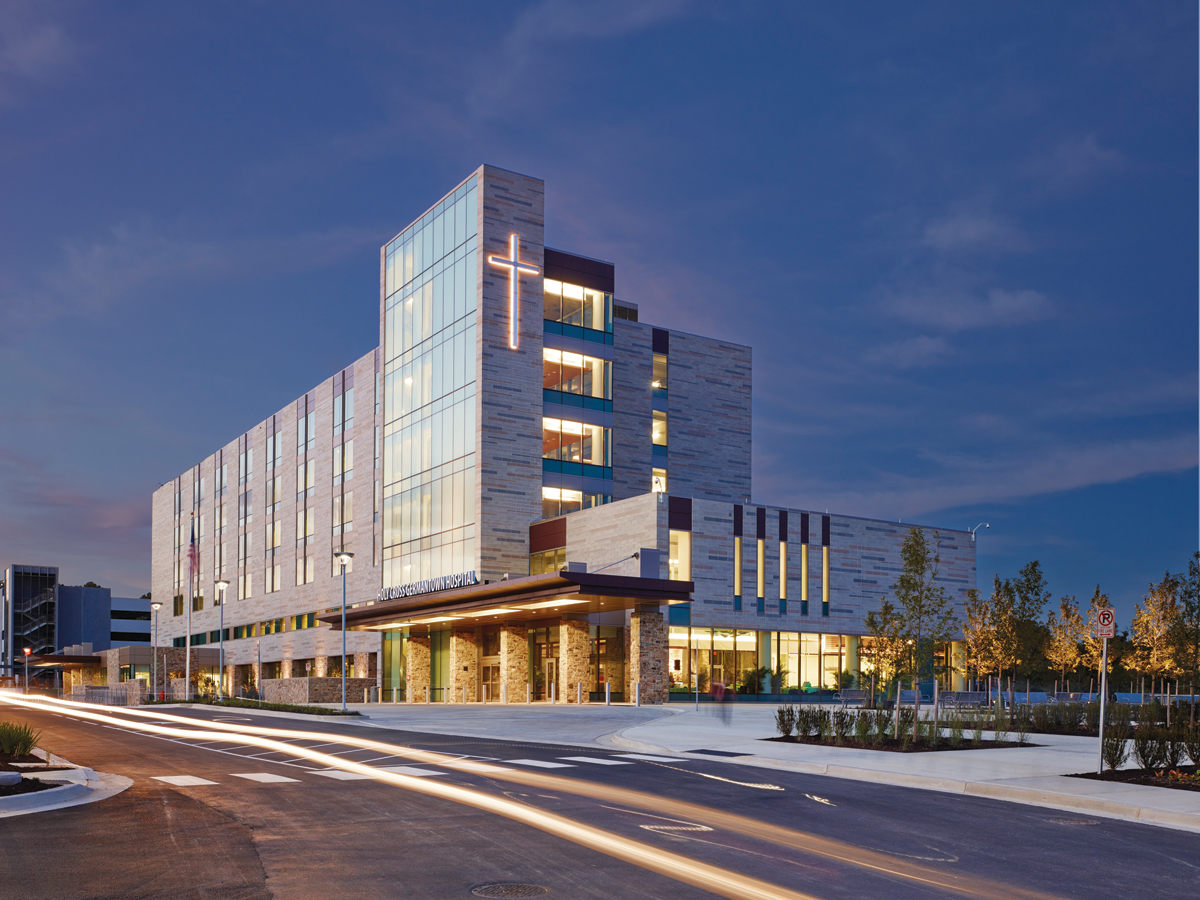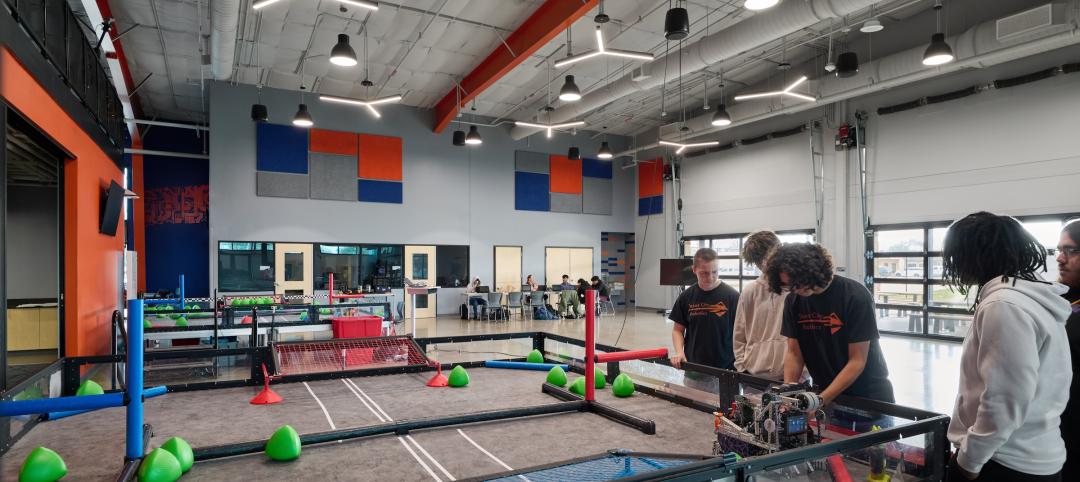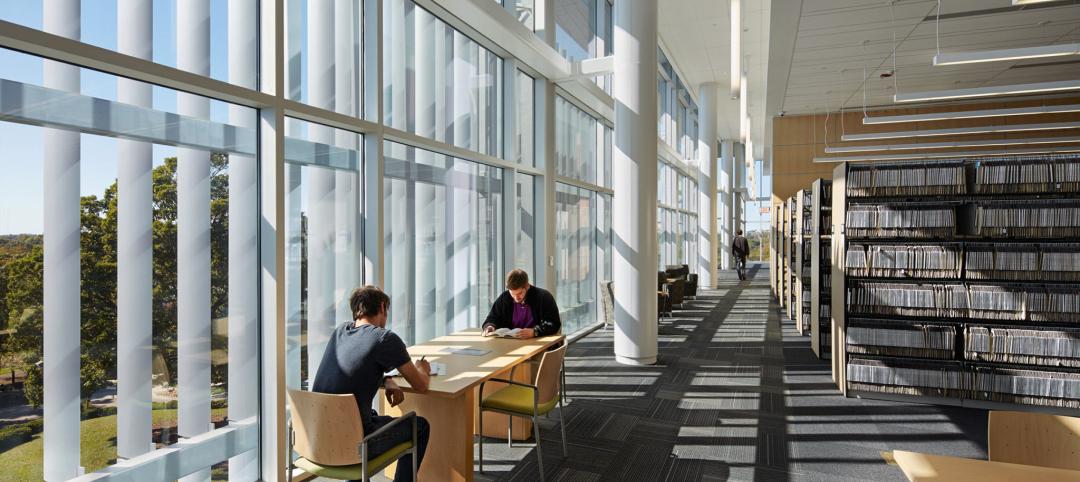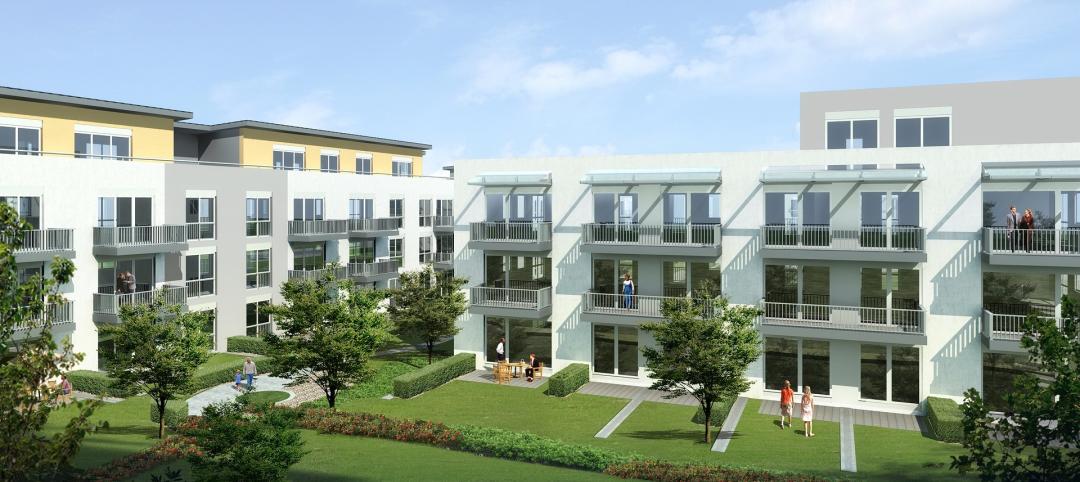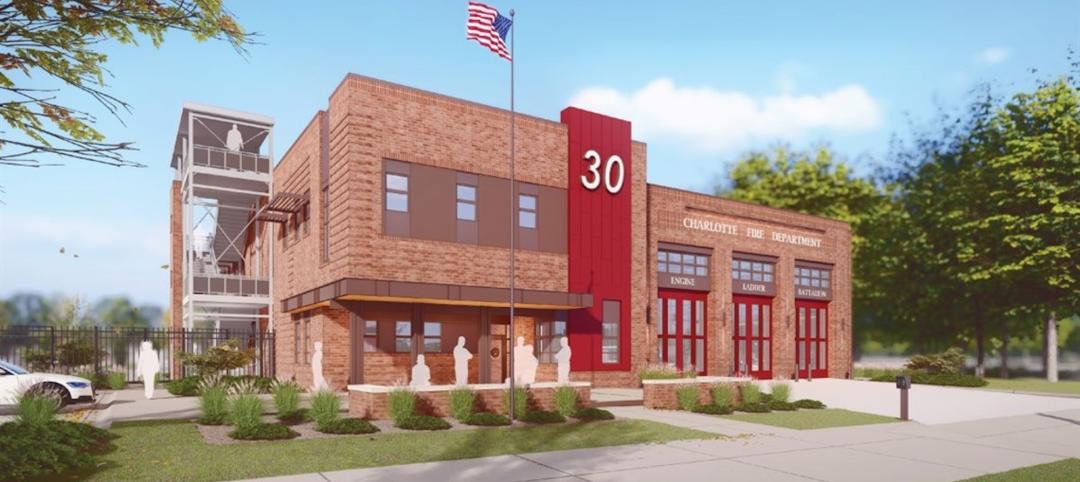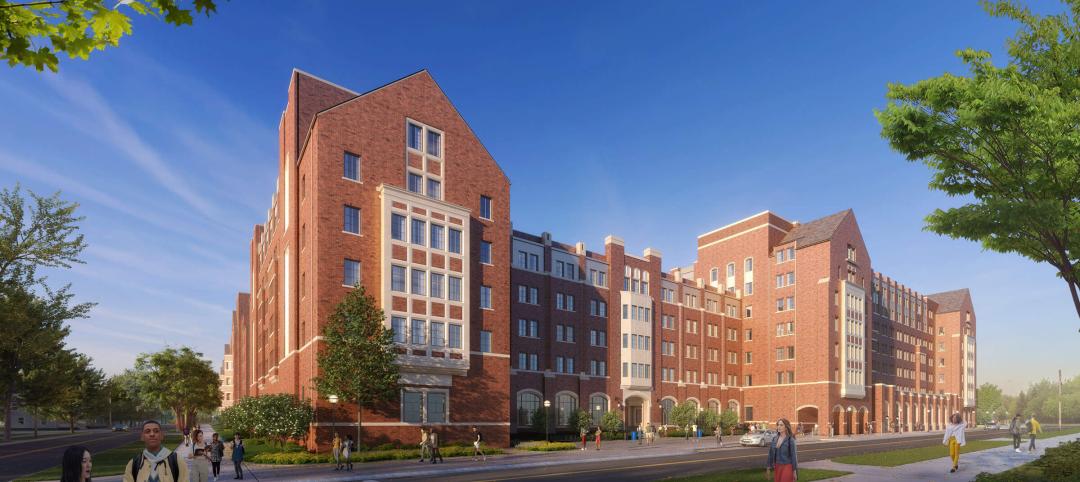Holy Cross Health, a Catholic healthcare system in Maryland, opened its new 237,000-sf hospital in Germantown last October 1, thanks to a Building Team—led by SmithGroupJJR (architect), CBRE Healthcare (PM), and Whiting-Turner (GC/CM)—that simply wouldn’t give up, despite the obstacles it faced.
The 93-bed Holy Cross Germantown Hospital is the first new hospital to be built in Maryland in 25 years, the first new hospital in Montgomery County in 35 years, and the first in the U.S. to be built on a community college campus. Yet it was threatened from the very beginning.
PROJECT SUMMARY
GOLD AWARD
Holy Cross Germantown Hospital
Germantown, Md.BUILDING TEAM
Submitting firm: SmithGroupJJR (architect)
Owner: Holy Cross Health
Project manager: CBRE Healthcare
SE: McMullan & Associates, Inc.
MEP: Syska Hennessy Group
CE/Landscaping: Macris, Hendricks and Glasscock
GC/CM: Whiting-TurnerGENERAL INFORMATION
Project size: 237,000 gsf (93 beds)
Construction cost: $110 million; $200 million total project budget
Construction period: June 2012 to September 2014
Delivery method: CM at risk
Seven years ago, Holy Cross Health President Kevin Sexton asked SmithGroupJJR to explore a partnership with Montgomery College Germantown for a new hospital on its campus. The master plan had to go through two cycles to get the go-ahead from county commissioners; then the Maryland–National Capital Park and Planning Commission had to give its OK. By October 2008, Sexton had funding in the bag from Holy Cross’s parent, Trinity Health, and was ready to file a certificate of need. That’s when all hell broke loose.
First, a rival hospital system contested Holy Cross’s CON. Worse still, the recession forced Trinity to pull the plug on all construction in its system.
On its own dime, SmithGroupJJR convened a two-day “workshop” in San Francisco with Whiting-Turner and others to explore ways to build a more cost-effective “hypothetical” 100-bed hospital. They took their recommendations back to Sexton, and within a year, he had the green light from Trinity. Holy Cross Germantown had new life.
just for fun, let’s add a few MORE HURDLES
In the interim, Trinity had issued new mandatory design criteria: projects were to be held to no more than $750,000 and 2,100 sf per bed. The state also tightened up its CON requirements and gave the Building Team only 90 days to develop a CON package that would meet the new criteria.
Using ideas derived from the workshop, the team came up with a three-point plan: 1) split the facility into two components—a patient tower with diagnostic and treatment facilities, and a support wing; 2) specify discrete structural, mechanical, and utility systems for each component, which would reduce costs, simplify MEP distribution, and yield more total square footage; and 3) build a prefabricated modular central utility plant that would be exempt from the CON-mandated square footage, thus yielding more clinical space.
This design scheme resulted in 30–40% savings in the sf/bed ratio. In May 2012, the Maryland Health Care Commission unanimously approved the CON. Holy Cross Germantown breathed yet another life.
Holy Cross Health’s mission called for prudence, not opulence. To fulfill that goal, the Building Team used full-scale, furnished mockups for labor/delivery, med/surg, and ICU patient rooms to get feedback from clinicians. The resulting design saved costs by reducing the amount of casework along footwalls. In reviewing bathroom mockups, Whiting-Turner suggested constructing the concrete slabs with a three-foot-radius swale sloped to the shower drain rather than a rectangular depression. This saved $125,000.
Midway through construction, a new head of surgery asked the team to consider a same-handed approach to the surgical suite layout, rather than the customary mirrored floor plan. This complicated the above-ceiling coordination for medical gases, supply air, light booms, and supports, especially since the plumbing and electrical sleeves were already in place. The team constructed virtual mockups to coordinate the work, which was completed with minimal disruption.
Note: SmithGroupJJR’s Bill Kline, a member of the awards jury, recused himself from this project.
 Maternity services include labor and delivery rooms, caesarean surgical suites, private postpartum rooms, and an eight-bed neonatal care unit.
Maternity services include labor and delivery rooms, caesarean surgical suites, private postpartum rooms, and an eight-bed neonatal care unit.
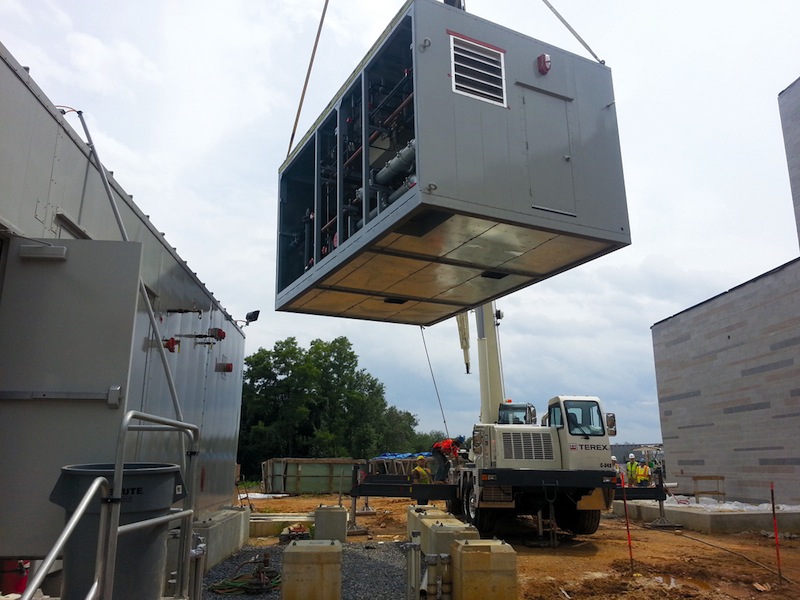 A prefabricated module is lifted into place for the central utility plant. Prefabrication enabled the components to be shipped in large sections like this and assembled ready for operation in less than three weeks.
A prefabricated module is lifted into place for the central utility plant. Prefabrication enabled the components to be shipped in large sections like this and assembled ready for operation in less than three weeks.
Related Stories
K-12 Schools | Aug 8, 2024
New K-12 STEM center hosts robotics learning, competitions in Houston suburb
A new K-12 STEM Center in a Houston suburb is the venue for robotics learning and competitions along with education about other STEM subjects. An unused storage building was transformed into a lively space for students to immerse themselves in STEM subjects. Located in Texas City, the ISD Marathon STEM and Robotics Center is the first of its kind in the district.
Affordable Housing | Aug 7, 2024
The future of affordable housing may be modular, AI-driven, and made of mushrooms
Demolished in 1989, The Phoenix Ironworks Steel Factory left a five-acre hole in West Oakland, Calif. After sitting vacant for nearly three decades, the site will soon become utilized again in the form of 316 affordable housing units.
Architects | Aug 5, 2024
Mastering the art of project schedule: Expert insights on design and construction
We sat down with two experts in the design field, Ron Dick (Founding Partner and Architect) and Mike Niezer (COO and Architect), to talk about everything you need to know about the entire process.
University Buildings | Aug 1, 2024
UC Riverside’s student health center provides an environment on par with major medical centers
The University of California, Riverside's new Student Health and Counseling Center (SHCC) provides a holistic approach to wellness for students throughout the UC Riverside campus. Designed by HGA and delivered through a design-build partnership with Turner Construction Company, SHCC provides healthcare offerings in an environment on par with major medical centers.
Libraries | Aug 1, 2024
How current and future trends are shaping the libraries of tomorrow
Over the last few years, public libraries have transitioned from being buildings that only store and lend books to being fully featured community centers.
MFPRO+ News | Aug 1, 2024
Canada tries massive incentive program to spur new multifamily housing construction
Canada has taken the unprecedented step of offering billions in infrastructure funds to communities in return for eliminating single-family housing zoning.
Government Buildings | Aug 1, 2024
One of the country’s first all-electric fire stations will use no outside energy sources
Charlotte, N.C.’s new Fire Station #30 will be one of the country’s first all-electric fire stations, using no outside energy sources other than diesel fuel for one or two of the fire trucks. Multiple energy sources will power the station, including solar roof panels and geothermal wells. The two-story building features three truck bays, two fire poles, dispatch area, contamination room, and gear storage.
Contractors | Aug 1, 2024
Nonresidential construction spending decreased 0.2% in June
National nonresidential construction spending declined 0.2% in June, according to an Associated Builders and Contractors analysis of data published today by the U.S. Census Bureau. On a seasonally adjusted annualized basis, nonresidential spending totaled $1.21 trillion. Nonresidential construction has expanded 5.3% from a year ago.
Student Housing | Jul 31, 2024
The University of Michigan addresses a decades-long student housing shortage with a new housing-dining facility
The University of Michigan has faced a decades-long shortage of on-campus student housing. In a couple of years, the situation should significantly improve with the addition of a new residential community on Central Campus in Ann Arbor, Mich. The University of Michigan has engaged American Campus Communities in a public-private partnership to lead the development of the environmentally sustainable living-learning student community.
MFPRO+ New Projects | Jul 31, 2024
Shipping containers converted into attractive, affordable multifamily housing in L.A.
In the Watts neighborhood in Los Angeles, a new affordable multifamily housing project using shipping containers resulted in 24 micro-units for formerly unhoused residents. The containers were acquired from a nearby port and converted into housing units at a factory.


